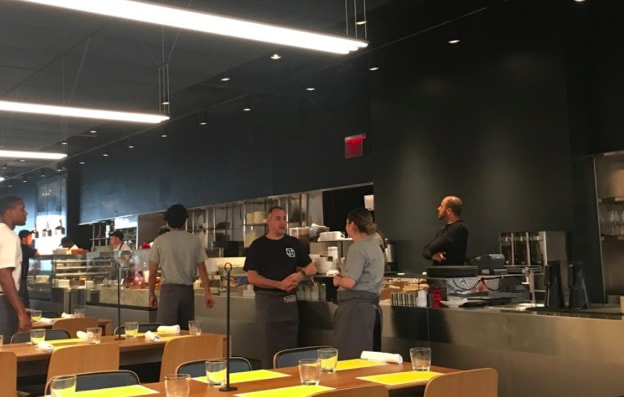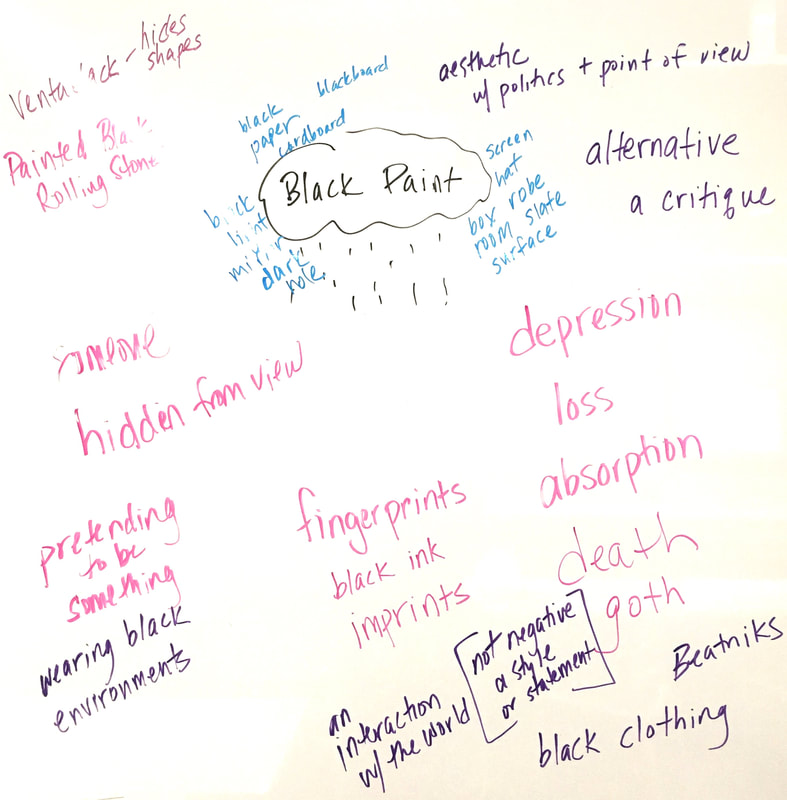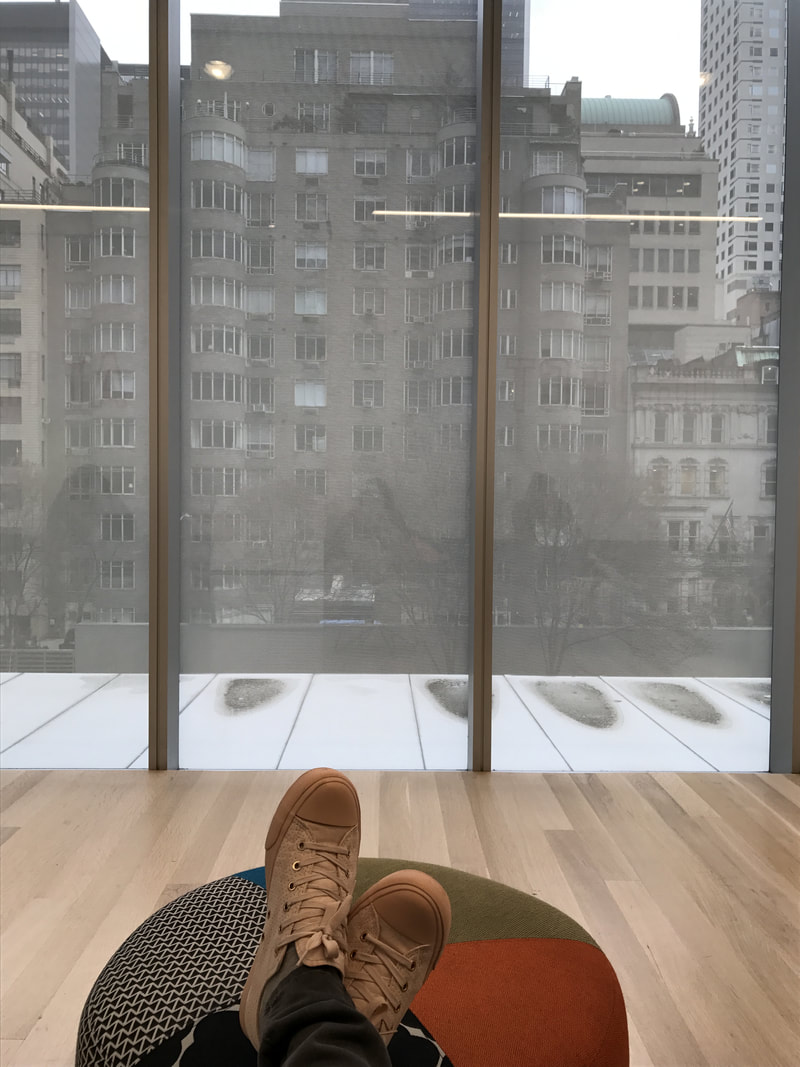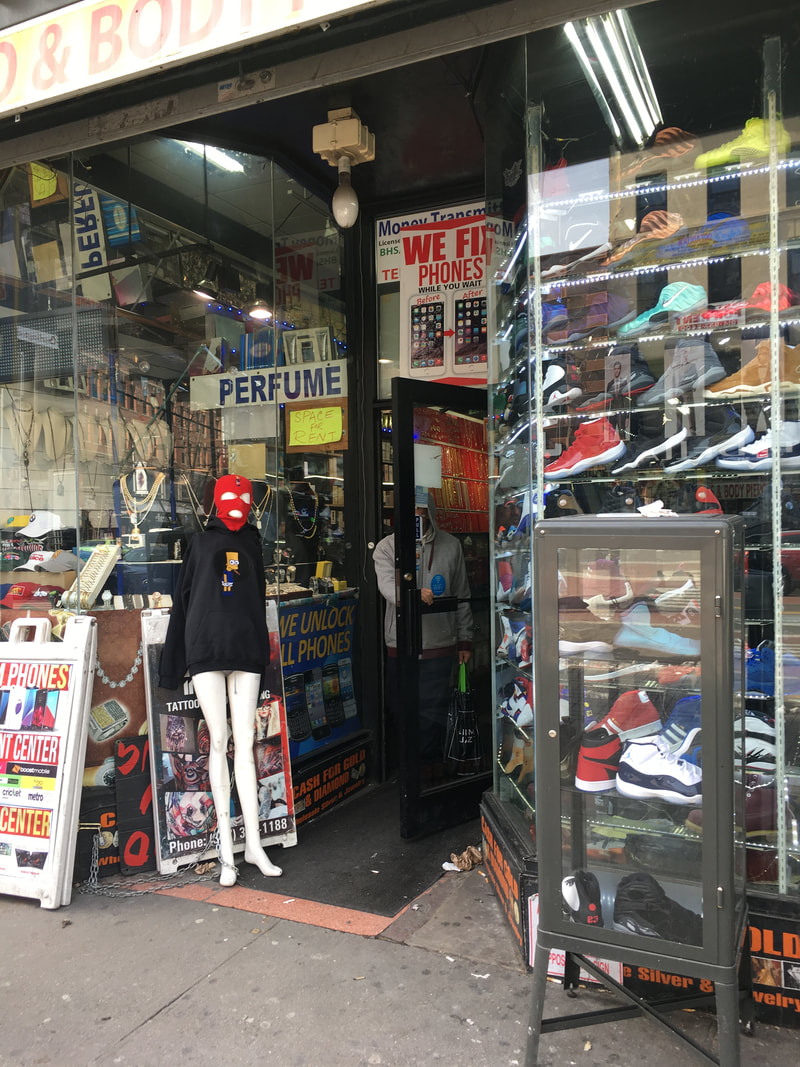
Who we are and what we are doing
Sitting in a museum cafeteria in midtown, we were faced with an enormous wall covered in black paint.
We were drawn to have our fourth curriculum lab meeting in a museum so we could be inspired. So that artwork and images and sound could prompt an unusual conversation about ideas and places and even our own backgrounds and memories. It did just that, and as we sat to debrief our experience, the black paint seemed to be an open surface awaiting a reply. It both absorbed and contained our ideas, and just as easily allowed the canvas to be wiped clean to start anew with a fresh conversation.
Black paint seemed an apt metaphor for the challenging discussions we wanted to have about education and curriculum. In this project, we wish to engage a wider audience in different kinds of conversations about designing curriculum. We share an interest in public spaces, where knowledge occurs but in unplanned and open ways. The outcomes are less rigid and therefore the path to learning is more open. Black paint has the quality to evoke this mystery, this sense of uncertainty. There is an invitation to layer meanings and change perspectives on what we think we are talking about or seeing.

Why the name, Black Paint?
The messiness of curriculum surrounds us as we paint over the surfaces of our world and scribble our meaning atop it. While the curriculum may seem nailed down in schools, curriculum is everywhere. We hope to engage with the public curriculum of everywhere: films, factories, museums, parks, subways, sidewalks, schools, and all the spaces in between. Black Paint remakes a familiar surface, opening up new connections. Black Paint is a place to experiment with ideas, approaches, and forms of curriculum.
Public curricula aim to include numerous individuals and groups, topics of consequence for society, materials that span local and global contexts, in and out of schools, and that connect past, present, and future.
Our curriculum design work looks within and beyond formal schooling to examine assumptions about who students are, who teachers can be, where education takes place, and what is considered knowledge and important to understand. The lab is an experimental space to promote dialogue about more public approaches to curriculum design.

What is curriculum design?
Thoughtful curriculum design requires a skeptical view of knowledge and communication, encouraging questions to complicate and examine assumptions underlying what we claim is important to know. To provoke a different relationship to knowledge, curriculum designers encourage questions, examine decisions, and negotiate new responses. Curriculum designers can use ideas to inform design by asking questions such as: What are the ideas about the world, knowledge, teaching, and learning that I will draw on? How might those ideas ground the curriculum? What are the implications for what I teach and how I teach it?

What is curriculum?
Curriculum is everywhere. Whether desired, or not, teaching and learning is in everything that people do—it is present in the websites we produce and consume, the streets we walk down, the people with whom we interact. Curriculum is part of ‘being’ in the world. While the construction of knowledge occurs through intentional teaching and learning contexts, it also occurs when one seeks escapism in activities like listening to music or hiking in the forest.
Public curricula aim to include numerous individuals and groups, topics of consequence for society, materials that span local and global contexts, in and out of schools, and that connect past, present, and future